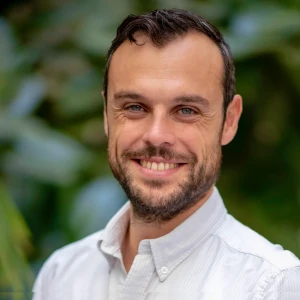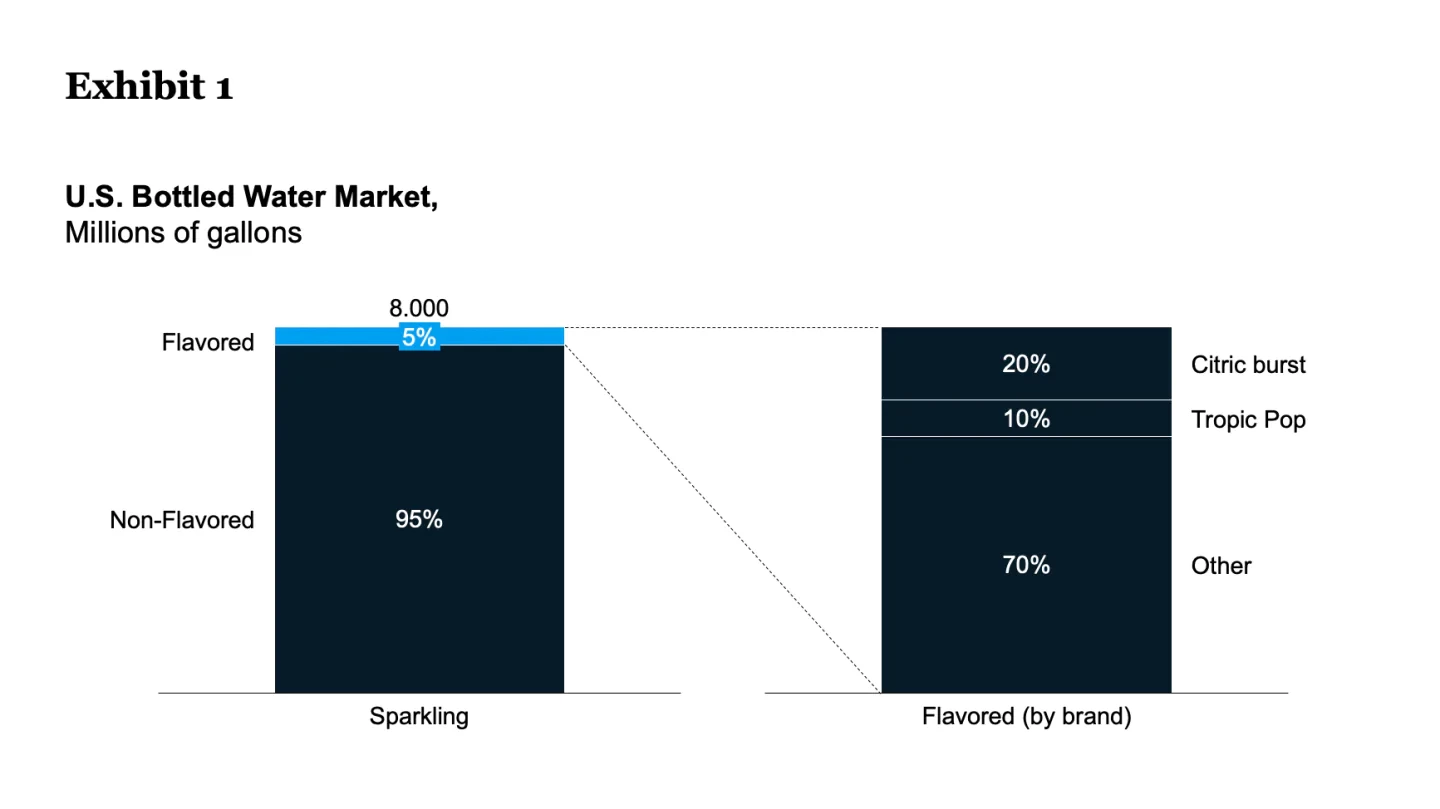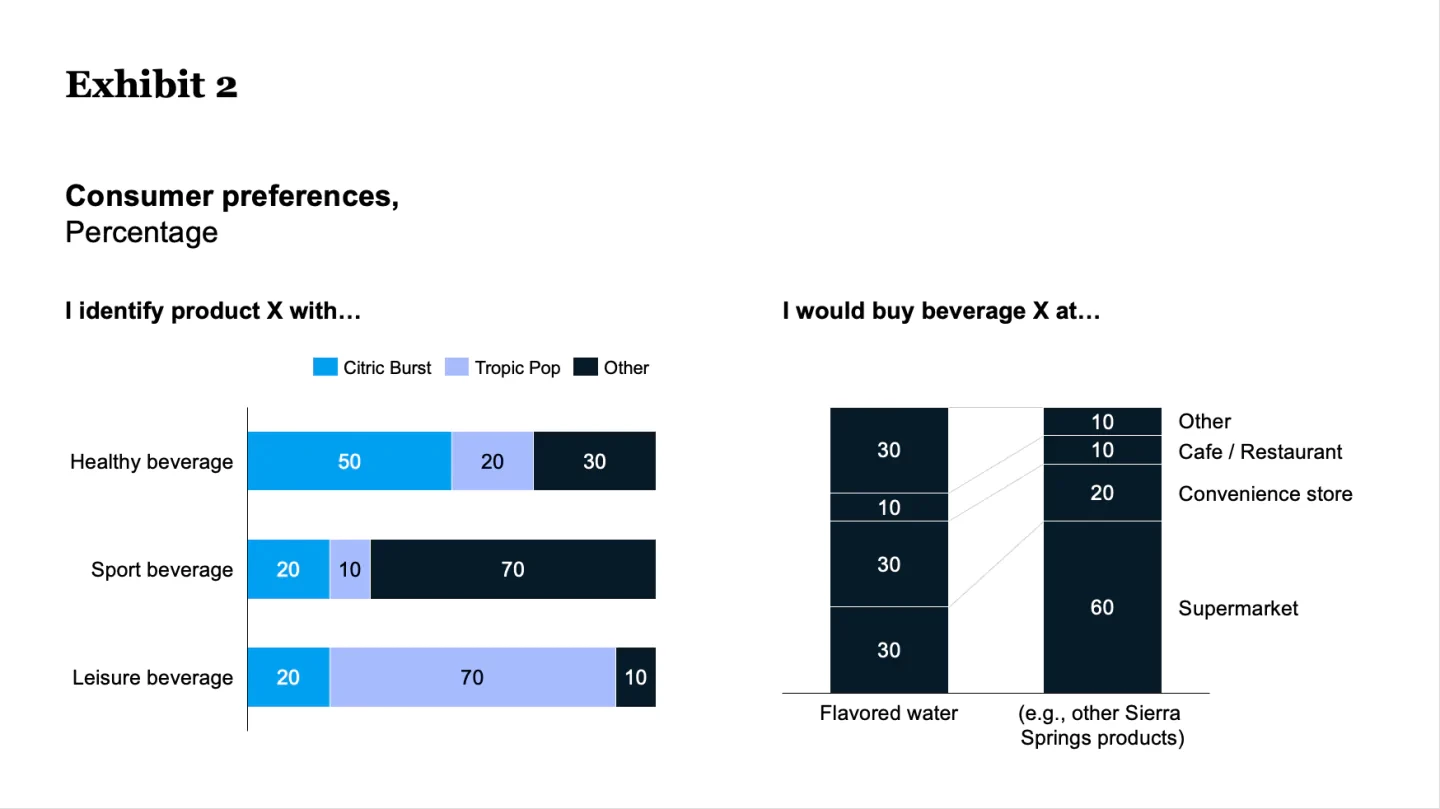Our client is Sierra Springs, a top 3 spring water producer in the U.S. The company owns the entire bottled-water production supply chain, including water sourcing, production of water-based products, bottling and packaging and distribution to retail outlets. Sierra Springs also leads its own brand design, marketing and sales efforts.
Sierra Springs has several brands across still and sparkling water drinks, 3 large bottling plants throughout the country and distribution agreements with most major retailers.
Sierra Springs is evaluating the launch of a new product, a flavored sparkling bottled water called Berry Fizz. The company’s Chief Marketing Office has asked us to help analyze the major factors surrounding the launch of Berry Fizz and its own internal capabilities to support the effort.
Part 1 - Case Framing
Q1: What key factors should Sierra Springs consider to decide whether or not to launch Berry Fizz?
Part 2 - Market Share Math
Sierra Springs has gathered the following information (show exhibit) on the U.S. bottled water market, showing an estimate for the share of flavored water, as well as the current share for the two main products: lemon and berry.
The client has also made the following estimations:
- Berry Fizz would launch in a 16 oz. presentation (1/8 of a gallon) with a price of $2.00 to retailers
- In order to launch Berry Fizz, Sierra Springs would need to incur $40 million as total fixed costs, including marketing expenses as well as increased costs across the production and distribution network
- The VP of Operations estimates that each bottle would cost $1.90 to produce and deliver in the newly established process.
Q2: Based on the target price and upfront fixed costs, what share of the flavored non-sparkling bottled water would Berry Fizz need to capture in order to break even?
Part 3 - How to Capture Market Share
Q3: What would Sierra Springs need to ensure to gain the required market share for Berry Fizz ?
Part 4 - Understanding Consumer Preferences
Within the key drivers for market share, Sierra Springs wants to know which to tackle first and what the strategy should be. The following information shows results from a study run by the client, based on a sample of target consumers.
Q4: What can you conclude from the study in regards to the preferred marketing image and strategy of Berry Fizz?
Part 5 - Production capacity
Sierra Springs has decided to produce Berry Fizz from an existing dedicated production line in a single facility. In order to be on the safe side in case of increased demand they plan for an annual capacity of 420 million bottles (units) of Berry Fizz. The production line they have in mind currently operates for 20 hours per day, 7 days a week and 50 weeks per year. The speed for the current bottling process is 750 units per minute.
Q5: Is the current production capacity sufficient to fulfill the desired annual production plan of 420 million bottles of Berry Fizz?
Part 6 - Factors to Increase Production Capacity
Given the need for a specialized production process for Berry Fizz, the company has decided to add a new production line to only one of their 3 facilities.
Q6: What factors should they consider in selecting the adequate plant?
Part 7 - Next Steps to Launch New Product
The Sierra Springs CEO confirms the decision to launch Berry Fizz. The product will be marketed as a sports drink, produced in the U.S., and distributed through supermarkets, convenience stores, and sport outlets.
Q7: What next steps should Sierra Spring take to launch Berry Fizz?





